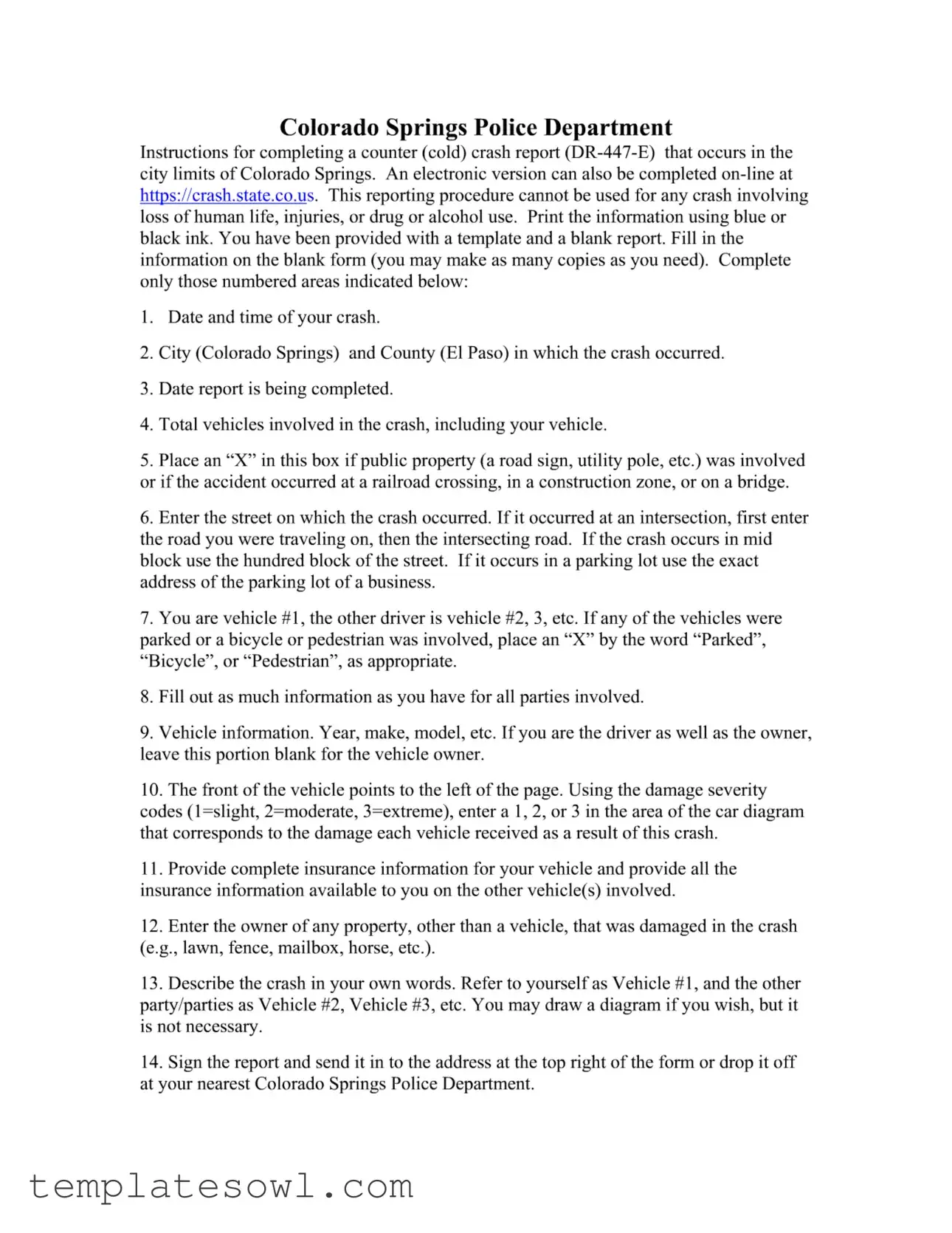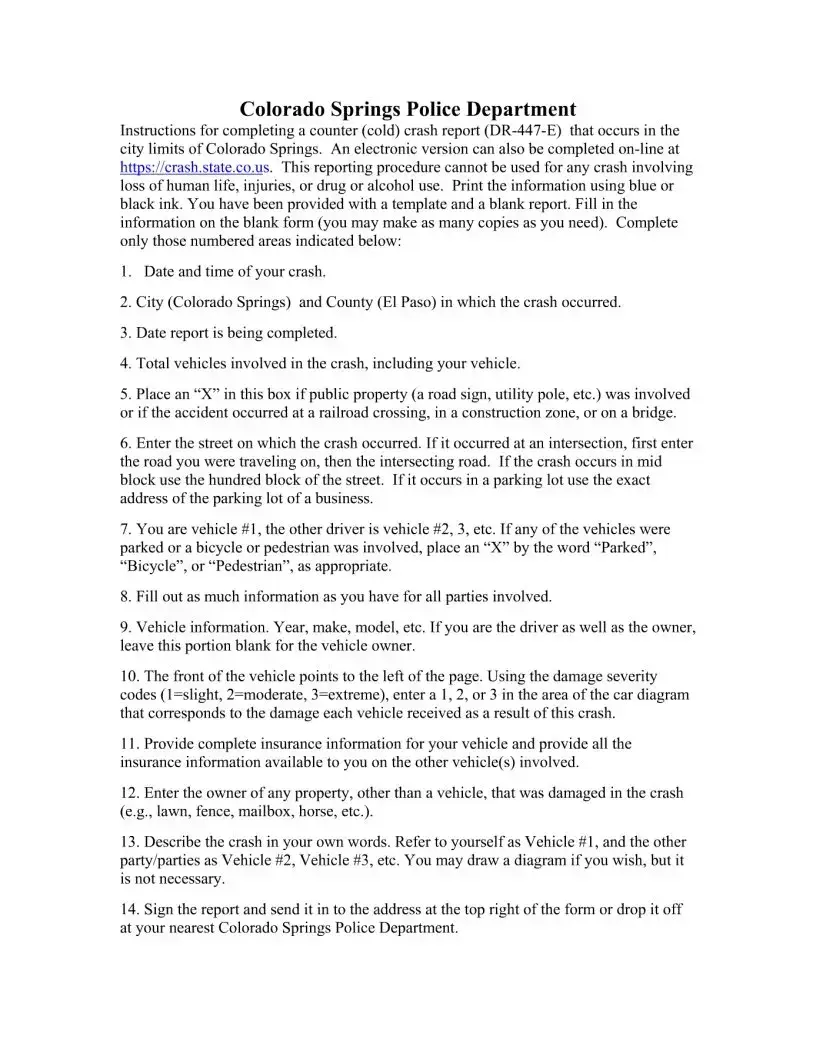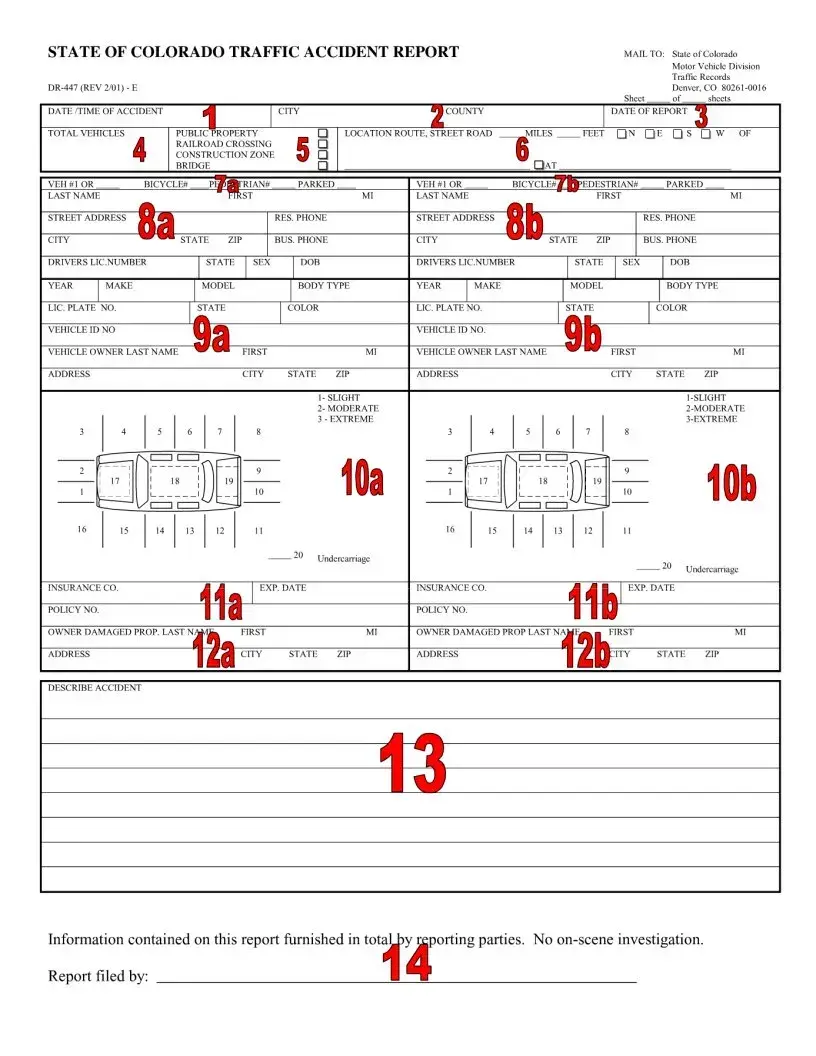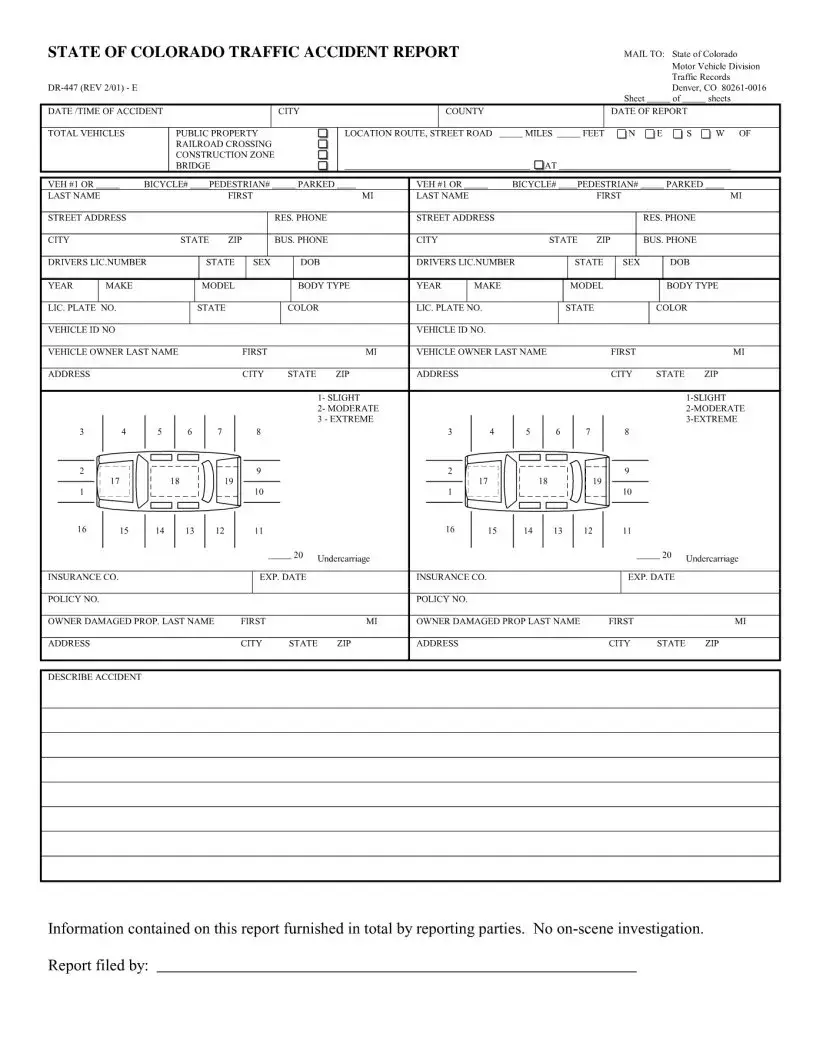What is the purpose of the CSPD Accident Report form?
The Colorado Springs Police Department (CSPD) Accident Report form, also known as DR-447-E, is used to report minor traffic accidents that occur within the city limits of Colorado Springs. This form is applicable for incidents that do not result in human fatalities, injuries, or involve drug or alcohol use. It allows drivers to document the details of the crash for legal and insurance purposes.
How can I complete the CSPD Accident Report form?
The accident report form can be completed either by hand or electronically. If you choose to complete it by hand, use blue or black ink and print clearly. The form consists of numbered fields that guide you through the required information. You will need to provide details such as the date and time of the crash, location, vehicle information, and an explanation of the incident. For electronic submission, visit https://crash.state.co.us.
What information do I need to provide in the accident report?
When filling out the CSPD Accident Report form, you must include specific details about the accident. This includes the date and time it occurred, total number of vehicles involved, the exact location, and damage assessments. Be prepared to provide insurance information for yourself and any other party involved, as well as descriptions of what happened during the incident. Vehicle involvement, including bicycles and pedestrians, must also be marked appropriately.
What should I do if property damage occurred in the accident?
If the accident resulted in damage to property, such as a fence or mailbox, this information should also be included on the form. You must enter the owner’s name of the damaged property, along with their address, in the designated section. Documenting property damage is essential for legal and insurance processes.
How do I submit the completed accident report?



